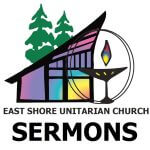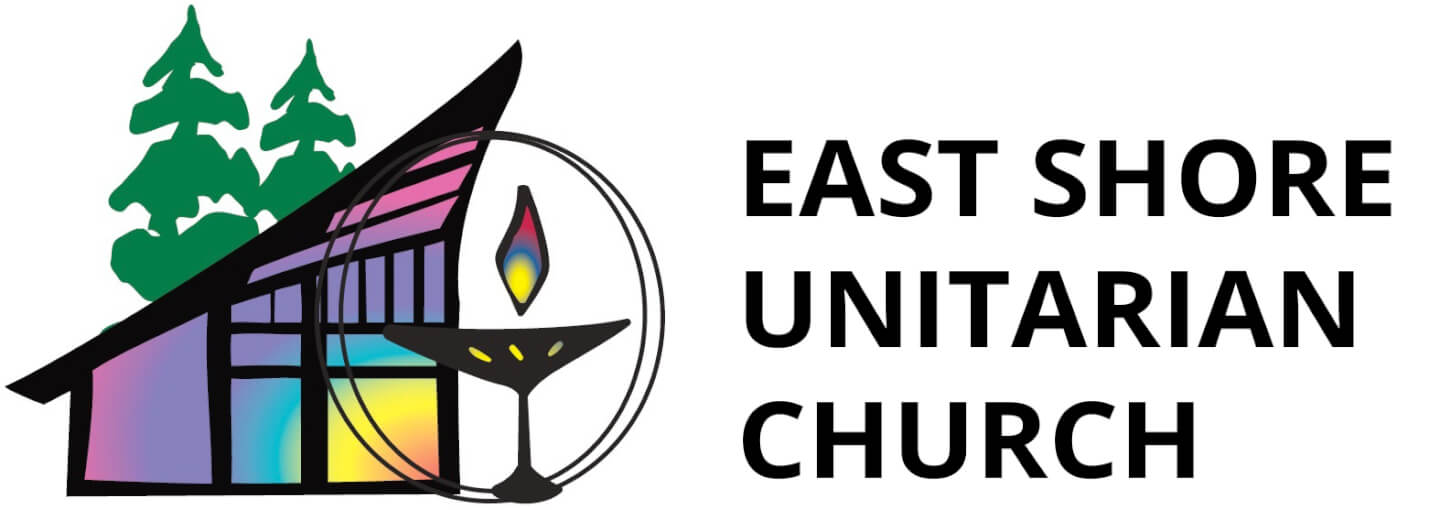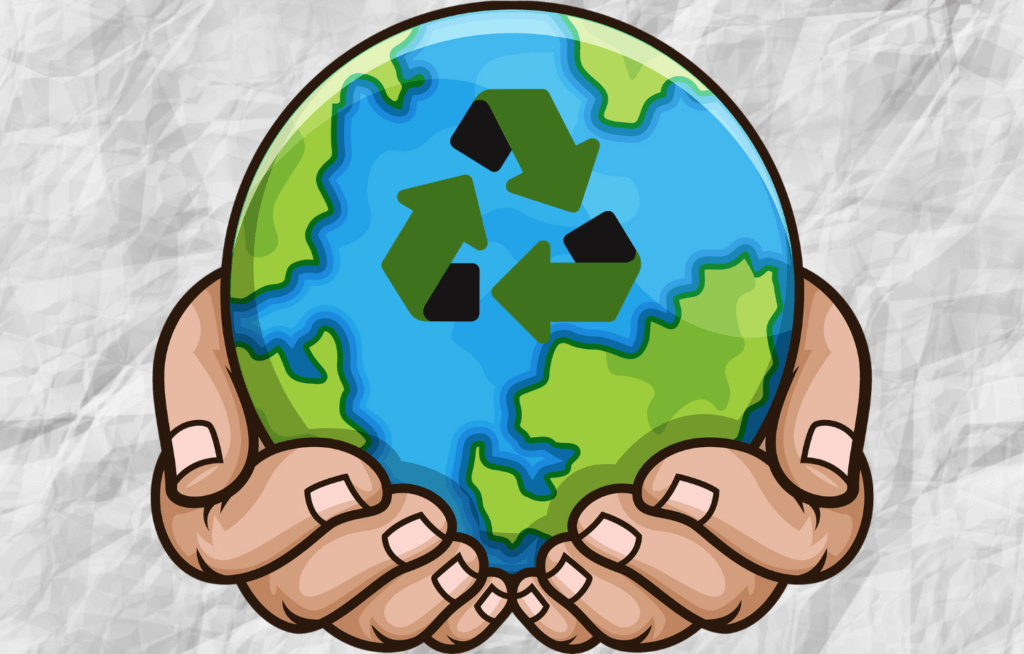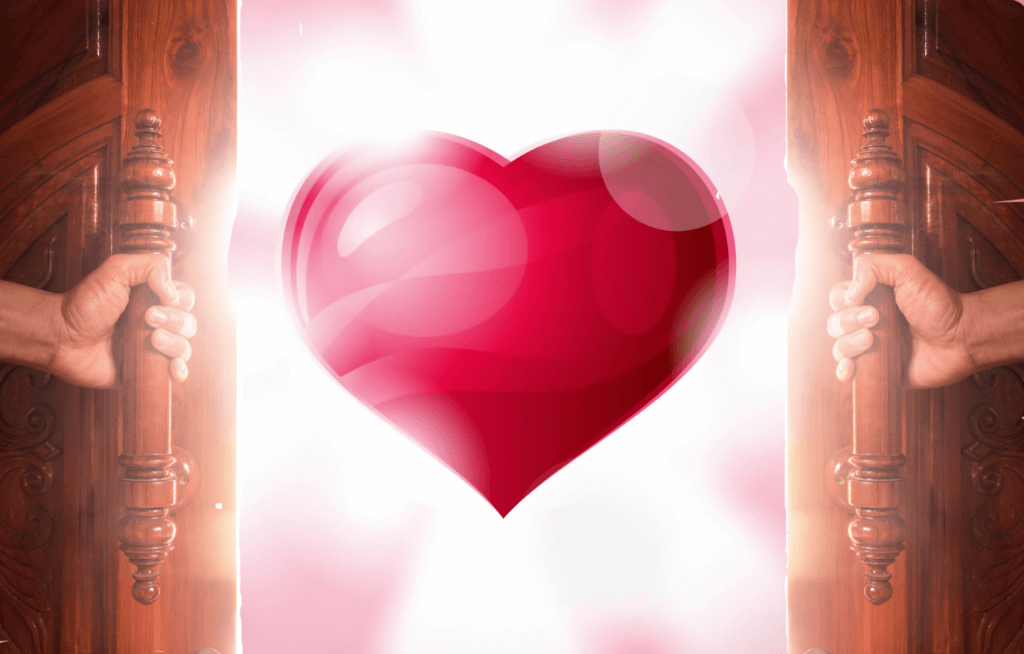
- This event has passed.
Healing Resistance
Sunday, January 15 @ 10:30 am - 11:30 am
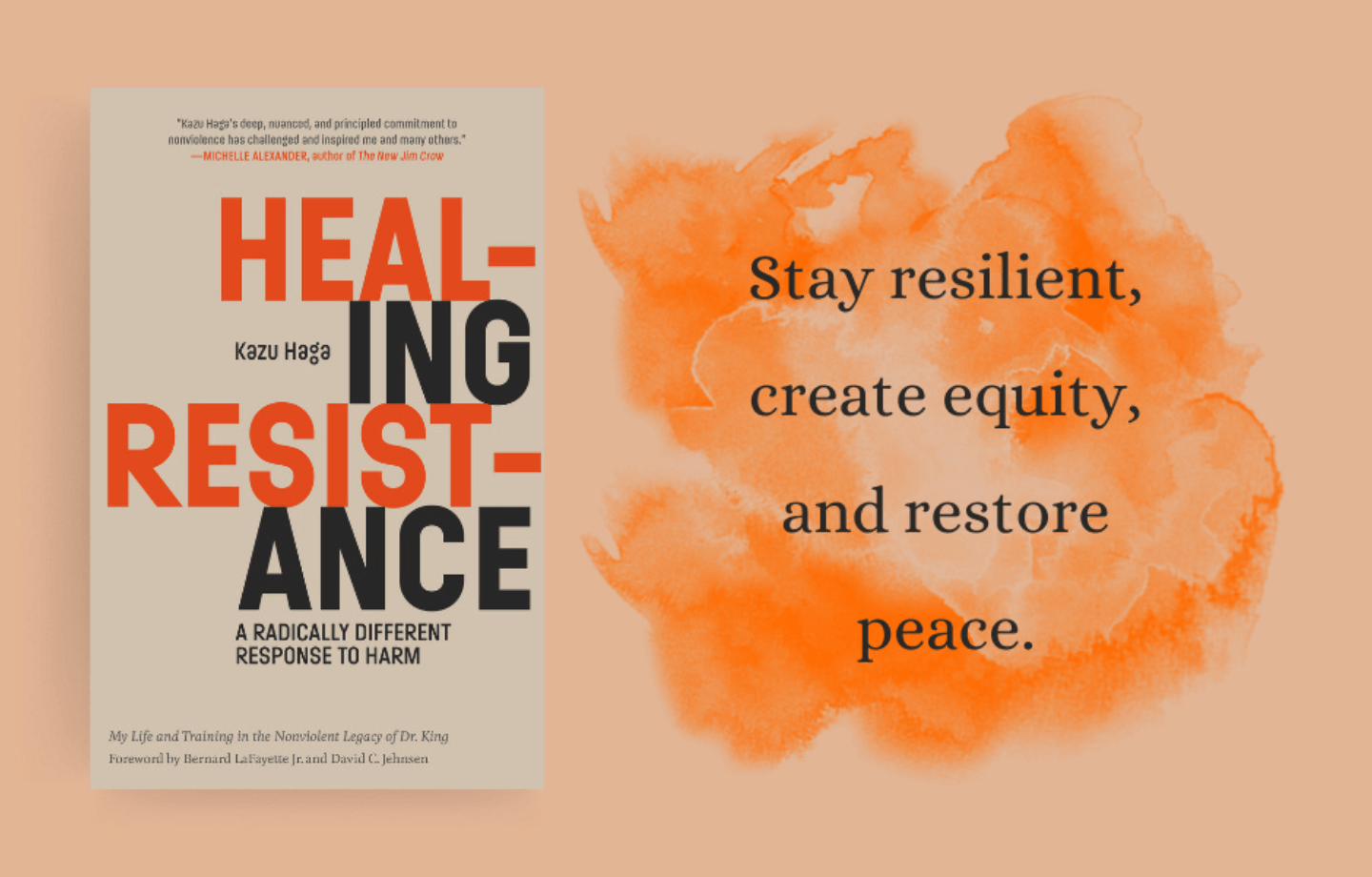

In Honor of Rev. Dr. Martin Luther King, Jr. we will explore teachings from the book “Healing Resistance: A Radically Different Response to Harm” by Kazu Haga. Reclaiming the energy and assertiveness of nonviolent practice, we can transform not only unjust systems but broken relationships. Rev. Dr. María Cristina Vlassidis Burgoa will be preaching.
How to Attend
We require masks in all buildings. We encourage all in person participants to be vaccinated. Read more about our In Person Guidelines here.
• To virtually attend, please Zoom in using room number 989 3107 9078, passcode: chalice.
• To phone into the service, call 669-900-6833, Meeting ID: 989 3107 9078.
For those joining, please mute as soon as you enter the room, so everyone can hear. Please note, the services will be recorded, but at this time, there are no plans to share the recording.
More Information
Religious Education for children and youth happens during worship on Sundays. Children and youth arrive in the Sanctuary for the just a little bit and welcome in Sunday with a story and song. Then, they attend their own programs in the Education building. Learn more here!
If you don’t have a chalice, but want to light one, check out our Making a Chalice at Home page.
Both virtual and in person services are followed by coffee hour.
Sermon Audio
Healing Resistance
Sermon Text
This morning we honor the memory, the struggle, the teachings, and the ongoing lessons that Rev. Dr. Martin Luther King taught us. We reflect upon the meaning of nonviolence and how we individually and as a community face or look away when there’s conflict. So far, you have heard sermons about repentance and repair, Great expectations, Mistakes & Miracles, and Transforming Hearts, among others. These were not chosen randomly. I have been very intentional in selecting guest preachers and topics that are relevant to our communal lives. The topics reflect my learning so far about this community, its culture, history, and hopes for the future. In the short time that I have been among you, we have shared deeply and delighted in the many ways we can participate in growing a vibrant and welcoming church community. We have also identified areas that have not seen the light for some time. Areas that have been labeled conflict and been locked away for fear of further division and intensified conflict. At the heart of my ministry, what I most want to give, is love. A love that is real, that is messy sometimes, a love that is courageous, that takes risks, a love that requires the spirit of community, a communal way of being that promotes healing on many levels.
At our most recent board of trustees meeting, I read aloud my report which focused on healing. Healing between the staff and past boards, healing among board members, healing among the staff, the past boards, and the congregation, and the healing of our own hearts. Healing requires repair with intentionality and compassion. It requires asking the people who have been harmed whether repair is possible and what that would look like. These can be difficult conversations which, understandably, we might try to avoid.
I am thinking about this as I begin to plan my installation ceremony, an important ritual that officially announces to the larger community that we have entered into a covenant, which I consider holy. A promise that we will do our best to bring our best selves, especially to difficult conversations and during hard times. A promise that we will bring our authentic selves and that we can trust each other to listen deeply, name the harm, ask for forgiveness, and offer an opportunity for repair. When I fast forward from the installation ceremony, I ask myself what is it that I would want my legacy to be in this congregation? Will it be sermons meant to inspire and strengthen us for the journey? Will it be offering opportunities to practice cultural humility? Will it be journeying with you all towards liberatory practices that free us all? Will it be my ongoing, incessant call for radical hospitality? Will it be my passion for inclusion of our parents, children, and youth in leadership roles, in meaningful worship services, and social justice actions? Will it be my invitation to collective decision making practices that are inclusive and fair? Will it be my New York City urban directness that might ruffle some feathers? Will it be my commitment for all of us to treat our staff with the same love and respect that we expect from each other? Will it be my feminist/queer/immigrant/indigenous/multicultural perspective applied to every single area of our shared ministry? YES, AND…what I hope for the most is to leave a legacy of revolutionary love. A love that celebrates change, a love that pivots when needed in order to be more inclusive, a love that weeps and breaks and is mended time and time again…this love requires that we face conflict, that we name the harm, that we do the work of repair, together. It is the same love that you already offer to your beloved family members, to your best friend, and hopefully, to yourself.
So in that spirit, I offer today part I of the work of Kazu Haga, author of Healing Resistance: A Radically Different Response to Harm.
As the author himself declares:
‘This book contains nothing new. No new knowledge, no new insights, no new wisdom to speak of. Perhaps not the best words to begin a book with, but it’s the truth.” Same with this sermon. Probably, most of you are familiar with the works of Rev. Dr. Martin Luther King, Jr. Maybe you’ve read and even participated in workshops about developing Non Violent Communication skills, and perhaps participated in some of the efforts in this community to address conflict and bring some healing.
Let’s consider the work of Kazu Haga in the spirit of community, learning together, reinforcing what we already know, and gleaning new understandings about conflict, peace, healing, and agape, the love that inspired Rev. Dr. Martin Luther King, Jr.
What’s the first word or image that come to mind when you think of conflict?
In his introduction, Kazu Haga writes:
“We can bring down the entire system and have a worldwide revolution, but if we haven’t healed our traumas and learned how to be in an authentic relationship with each other, we will corrupt any new system we put in its place.”
As a new minister, it is my duty to learn about the traumas that are at the root of congregational conflict. I cannot begin an authentic, relevant, inspiring, healing ministry under the illusion that all is well and whatever happened in the past should stay in the past…that is why I am in constant conversation with staff, the board, ministry teams, and even people who have left the church, to understand the traumas, to lift the veil, to shake the carpet, to unlock those rusty doors, and allow the light to bathe our truths and inform our hopes. I also know that ours is a shared ministry journey. That I cannot and should not try to do it alone. That we need one another. Like Kazu Haga, I too yearn to be in a community that “engages both in personal transformation as well as structural change. A community that understands we need to work on healing our traumas and transforming our relationships. If we don’t upend unjust systems, we will spin our wheels forever… What’s possible at the smallest scale is possible at the largest scale. Whether we are talking about intrapersonal conflict within our own hearts; interpersonal conflict between two people; or large-scale global conflicts between nations; the principles, practices, and strategies that guide the transformation of conflict are the same at every scale.”
He goes on to say that we need to resist injustice, to resist blaming, to resist despair and that we need to do that in a way that is healing to everyone. He describes nonviolence as a way of life, not as a strategy, a lesson in a book, or bullet points from a workshop that we need to dust off when conflict arises. A way of life, a way of being, a worldview that centers reconciliation and refuses to dehumanize any individual, that cultivates compassion for all beings…”
How many of us consider ourselves activists? How many of us consider nonviolence as a way of being rather than a set of strategies that don’t include violence?
How many of us consider the absence of overt conflict or tension as peace? Kazu Haga teaches us that the concept of negative peace is:
“The absence of open tension at the expense of real peace and harmony. Sometimes the original pain of something doesn’t hurt nearly as much as the ways in which that pain goes unacknowledged. Having to bury it and not being able to give words to it can exacerbate it, and having our pain feel invalidated can be one of the most hurtful things we can experience. (p. 6).
In these past couple of months, I have been asking myself: What is the original pain? Whose pain is being unacknowledged and/or invalidated? What has been buried for the sake of avoiding conflict, or for fear of appearing “troubled” or “imperfect” or “not good enough”?
When congregations embark on ministerial search, it is difficult to put into words the conflicts that have caused division and brought the congregation to the edge of the precipice, times when you questioned your identity, realized mistakes. Perhaps search committees and church leaders believe that it wouldn’t make for a very promising job offer to list all the root causes of conflict and the necessary healing work that needs to be done by the incoming minister. I actually think that for someone like me, with healing at heart of my ministry, it is a positive sign of healthy self awareness and not an insignificant measure of humility and courage.
But as Kazu Haga warns us, the mere desire to change will not bring about change. We need training and skills and practice, practice, practice. He states: “A commitment to nonviolence means a commitment to heal the open wounds in our hearts, our families, our communities, and our world.” Let me repeat this: A commitment to nonviolence means a commitment to heal the open wounds in our hearts, our families, our communities, and our world.” (p. 11).
“Sometimes it’s the words that we don’t say or the actions that we don’t take that can be a form of violence. Silence, isolation, neglect, abandonment, ignoring someone, not coming to someone’s aid when they need help, or withholding resources from someone in need can also be as hurtful as getting beaten with a stick. So violence is clearly not just the use of physical force, and we need to include nonphysical forms of harm in our understanding of violence.” (p. 47).
“The Japanese word kotodama translates to something along the lines of, “spirit of the word.” Many people believe that the words we voice have a divine spirit to them, and voicing something can have an impact in the material world. In mystical Judaism, Buddhism, Hinduism, and many other wisdom traditions, there are practices of repetitively chanting mantras and sutras out loud, with the belief that the sound vibration carried by the syllables has an effect on our reality. I view this concept slightly differently. I believe that words are nothing more than sounds we make with our vocal cords, and it is the spirit that we put into the word that gives it its true nature, its true meaning, and its true kotodama.” (p. 53).
“Nonviolence is not about what not to do. It is about what you are going to do about the violence and injustice we see in our own hearts, our homes, our neighborhoods, and society at large. It is about taking a proactive stand against violence and injustice. Nonviolence is about action, not inaction.” (p. 56).
Dr. King went on to say that, “peace is not merely the absence of tension, but the presence of justice.” Oftentimes in our society, we think of peace as calm, quiet, and serene. We conjure up images of watching the sunset on a tropical beach, meditating in the forest by a creek, incense, scented candles, and kumbaya around a campfire. That can be as problematic as “Peace is not merely the absence of tension, but the presence of justice.”
—Martin Luther King Jr. (p. 57).
So how do we respond well? In the heat of the conflict, it is hard not to get emotional. Once emotions get triggered, it’s hard to see things objectively. This is why it is helpful to study the nature of conflict and understand how it operates objectively. You don’t improve as a martial artist by getting into street fights all the time. You improve by practicing in the safety of a dojo, outside of the heated emotions involved in a real-life combat situation. You practice your moves repetitively, over and over and over again, so that those skills become integrated and embodied as muscle memory, and when you are in a real conflict, you’re not thinking about it. A saying from Islam teaches us that “a moment of patience in a moment of anger prevents a thousand moments of regret.” It is oftentimes decisions that we make in split seconds that drastically alter the course of our lives. I once heard someone say, “Conflict is the spirit of the relationship asking itself to deepen.” It is through conflict that relationships are strengthened, and we begin to see each other in our authenticity. When handled right, conflict is a sacred gift. Conflict is a sacred gift!
Beloveds, I will leave you with these words to ponder until next time when we’ll continue with Part II and we’ll discuss how the different levels of conflict intersect with the different types of conflict. Until then, let us exercise patience, allow ourselves to reconsider conflict as more than a negative thing, let us open up to the notion that conflict can be a gift. Real peace-building requires us to learn how to have the conversations we don’t want to have. In the name of love, let us shine a light on those places and people that are in need of attention, visibility, and healing. Amen?
More Event Details
Directions
Google Maps offers you door-to-door directions for driving, walking, biking, or public transit.
We have several parking lots. Our upper lot, off SE 32nd Street, is closest to our Sanctuary, it has handicap and stroller parking. There is a roundabout for drop-offs. Our lower, main parking lot is also off SE 32nd Street. There are stairs that will lead you up to the Sanctuary. If that lot is full, there is also street parking on 32nd Street.
Accessibility
Learn more about accessibility at East Shore here.
